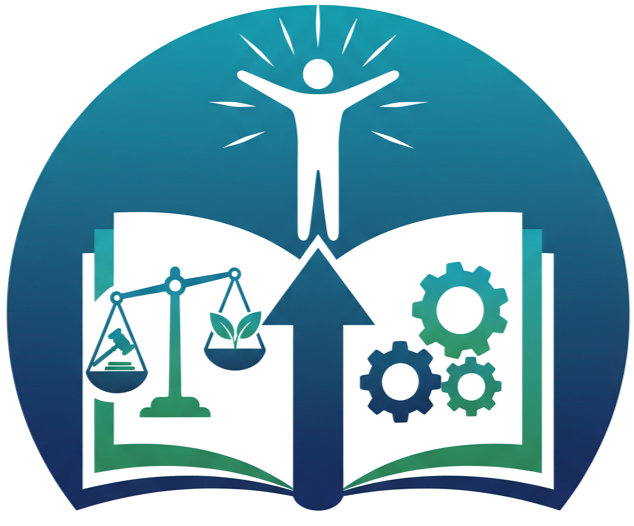Understanding Systemic Failure
Systemic failure occurs when institutions designed to protect, support, or govern people break down in ways that reveal flaws not just in policy, but in culture and structure. Unlike isolated mistakes, systemic failures are patterns — recurring outcomes that point to deeper dysfunction. They expose how bias, complacency, or lack of accountability can erode the very foundations of justice and fairness.
When such failures emerge, they force societies to confront uncomfortable truths: that the system itself — not only individuals — may be part of the problem. They invite reflection on how laws are written, how decisions are made, and how power is distributed.
Understanding systemic failure means looking beyond the surface. It requires acknowledging that the mechanisms of bureaucracy, politics, and even social norms can perpetuate inequality and harm. These failures are not random; they are symptoms of neglect, resistance to change, and the absence of empathy within structures meant to serve the public good.
The Anatomy of a Broken System
Every systemic failure follows a recognizable pattern. It begins with warning signs — overlooked complaints, ignored data, or suppressed voices. These early indicators often go unheeded because they challenge comfort, profit, or authority. Then, as issues accumulate, small cracks turn into crises.
Consider examples from across sectors: a healthcare system that fails to protect patients, a justice system that punishes the poor more harshly than the rich, or a corporate culture that silences whistleblowers. In each case, the underlying problem is not a single bad decision but a chain of them — reinforced by norms that reward conformity and punish dissent.
A broken system often operates under three illusions:
- The illusion of efficiency — believing that process matters more than outcome.
- The illusion of neutrality — assuming that institutions are unbiased simply because they follow rules.
- The illusion of accountability — trusting that oversight exists even when it lacks independence or power.
These illusions create the perfect conditions for harm to persist unnoticed until tragedy forces recognition.
When Culture Enables Failure
At the core of many systemic collapses lies culture — the shared beliefs and behaviors that guide decision-making. A toxic institutional culture can normalize negligence, discourage questioning, and breed fear of accountability.
For instance, when “loyalty” is valued above integrity, employees may stay silent about wrongdoing. When leadership prioritizes reputation over reform, institutions learn to manage optics rather than address problems. When diversity of thought is absent, blind spots multiply.
Changing this culture requires more than new policies; it demands moral courage. Leaders must set the tone by rewarding transparency and humility, not just compliance. Systems improve when people within them feel safe to speak, challenge, and innovate. Silence is the ally of systemic failure; open dialogue is its cure.
The Role of Leadership and Responsibility
Leadership is the single most influential factor in preventing or perpetuating systemic failure. When those in charge view problems as isolated incidents rather than symptoms of deeper issues, reform stalls. When leaders take responsibility — even for failures that predate them — systems begin to heal.
True leadership is not about maintaining control but about fostering trust. It means acknowledging mistakes publicly, supporting independent oversight, and listening to criticism with openness rather than defensiveness. The greatest lesson from systemic failures is that leadership without accountability becomes authority — and authority without transparency becomes abuse.
Leaders who prioritize ethics over expediency create environments where justice can thrive. Conversely, leaders who deflect blame cultivate cultures of denial that allow dysfunction to take root.
Public Inquiries and the Pursuit of Truth
When systems fail catastrophically — through injustice, neglect, or corruption — public inquiries often become the tool of last resort. They offer a structured opportunity to examine what went wrong and to recommend reforms. But their success depends on sincerity of purpose.
A public inquiry that merely assigns blame misses the point; its purpose is to uncover truth, expose patterns, and restore trust. Inquiries like those into wrongful deaths, institutional abuse, or government misconduct reveal not only procedural flaws but also moral ones. They remind society that accountability is not a punishment — it is a prerequisite for healing.
The findings of inquiries often include practical recommendations: improved training, clearer oversight, and better communication between agencies. Yet their most profound impact lies in restoring the social contract between citizens and institutions. When governments act on inquiry findings transparently, they demonstrate respect for both justice and the public’s intelligence.
Learning from History
Systemic failures are not unique to any era or nation. History is filled with them — financial collapses, environmental disasters, miscarriages of justice, and wars born from bureaucratic blindness. What distinguishes resilient societies from fragile ones is the ability to learn from these failures.
Historical reflection is not about shame; it is about evolution. When past mistakes are studied honestly, they become guideposts for reform. For example, modern human rights laws were shaped by the atrocities of the 20th century. Workplace safety standards emerged from industrial tragedies. The strength of democracy lies not in perfection, but in its capacity to self-correct.
Ignoring history, on the other hand, guarantees repetition. Systems that refuse to learn are doomed to fail again — often more severely and more publicly. That is why transparency in documenting failure is vital: it ensures that future generations understand not just what went wrong, but why.
Reform as a Continuous Process
Reform is not an event; it is a mindset. Systems that remain static eventually become obsolete. Continuous improvement requires ongoing reflection, data-driven decision-making, and humility — the acknowledgment that no structure is infallible.
Accountability mechanisms should be built into the everyday operation of institutions, not activated only in crisis. Regular audits, citizen oversight, and ethical training keep systems aligned with their purpose. Importantly, reform must be both top-down and bottom-up: leaders must set standards, but employees and citizens must hold them to it.
This shared responsibility creates resilience. It ensures that institutions evolve alongside the societies they serve, rather than drift away from them.
Human Cost and the Ethics of Neglect
Behind every systemic failure is human suffering — lives lost, opportunities destroyed, trust broken. It is easy to discuss failure in abstract terms, but each policy gap or oversight flaw has a personal story attached. Recognizing the human cost is essential for meaningful reform.
Ethics must remain central to every system. Efficiency, profit, and procedure are hollow if they come at the expense of dignity. A society that prioritizes results over people creates the conditions for future collapse. Ethics serve as the conscience of any institution — the reminder that numbers never outweigh humanity.
When systems forget this, they lose legitimacy. Rebuilding trust after ethical failure takes generations, and even then, scars remain. Prevention, therefore, is not only cheaper but kinder.
The Role of the Public
Citizens are not passive observers of systemic failure; they are participants in either its perpetuation or its prevention. Public apathy allows dysfunction to persist unchallenged. Civic engagement — through voting, advocacy, and community involvement — keeps institutions responsive.
Media, activism, and public education all play vital roles in exposing systemic injustice and demanding accountability. Transparency thrives when the public demands it consistently, not only during scandal. A vigilant society does not wait for failure; it monitors for early signs and insists on fairness at every level.
From Recognition to Reconstruction
Understanding that a system has failed is one thing; rebuilding it so that failure cannot recur is quite another. Once the truth is revealed — whether through a public inquiry, whistleblower testimony, or media exposure — the challenge shifts from identifying causes to creating meaningful solutions. This stage is where most societies struggle. Reform requires not only policy change but also the transformation of values, priorities, and organizational culture.
To rebuild, institutions must first acknowledge the depth of their failure without defensiveness or denial. True reform begins with transparency — an honest presentation of what went wrong and why. Denial perpetuates weakness; admission, on the other hand, marks the start of strength. From this honesty, a blueprint for reconstruction emerges, one that redefines how systems measure success, reward integrity, and uphold justice.
Every step of reconstruction should include the people most affected by the failure. Those who experienced injustice firsthand hold the insight necessary to prevent it in the future. When rebuilding includes their voices, reform becomes grounded in reality rather than theory.
Embedding Accountability into Everyday Practice
Accountability cannot exist solely as a reaction to disaster. It must become part of the daily rhythm of governance and administration. After systemic failures, institutions often rush to create new committees or oversight bodies, but if these operate in isolation — disconnected from the systems they monitor — the same problems resurface.
To prevent recurrence, accountability must be proactive. This means building structures where decisions are traceable, responsibilities are clear, and evaluation is constant. For example, police forces with independent civilian oversight, healthcare systems with transparent reporting, and corporations with public ethics audits demonstrate accountability in motion. These frameworks turn oversight into a living mechanism rather than a ceremonial one.
Equally crucial is personal accountability. Systems fail when individuals believe that responsibility belongs to someone else. A culture of accountability empowers every employee, official, or leader to act as a guardian of integrity. When people see accountability not as punishment but as shared protection of fairness, systemic resilience begins to grow.
Transparency as the Foundation of Trust
Transparency is the antidote to systemic decay. When information is freely available and easily understood, corruption and negligence find fewer places to hide. Yet transparency is not simply about publishing reports or releasing data — it is about communication, accessibility, and sincerity.
In the aftermath of failure, trust can only be rebuilt through openness. Citizens must be allowed to see not only the final results of reform but also the process itself. This means public progress updates, consultations, and visible engagement with those impacted. Transparency demystifies decision-making and bridges the gap between institutions and the people they serve.
However, transparency without empathy can still fail. Numbers and reports are not enough; people must feel seen. When institutions communicate in human terms — explaining what is changing and why — they transform transparency from a procedural requirement into a moral dialogue.
Cultural Reform: Changing the Invisible Rules
Policy reform is tangible; cultural reform is not. Yet it is the invisible culture within institutions that most often sustains systemic problems. Culture dictates how employees interpret rules, how leaders exercise power, and how failures are discussed internally. Without cultural transformation, new policies merely sit atop old habits.
Cultural reform begins with self-examination. Leaders must ask: What behaviors are rewarded here? Which voices are ignored? How is dissent treated? These questions reveal whether an organization values truth or convenience.
Training and communication can reshape behavior, but leadership example is even more powerful. When leaders model humility — admitting mistakes, inviting criticism, and rewarding honesty — they set new social norms. Over time, this consistency changes the moral DNA of an organization.
An effective culture of integrity is one in which ethical behavior is not exceptional but expected. In such environments, employees become stewards of justice, ensuring that systemic resilience is preserved through daily action rather than emergency reform.
The Role of Data and Evidence in Preventing Future Failures
Modern reform depends heavily on data, but data alone cannot guarantee fairness. Information is powerful only when interpreted within a framework of ethics and human understanding. In past systemic failures, key warning signs often existed — declining performance indicators, rising complaints, or financial irregularities — yet they were ignored or misinterpreted because the data did not fit the desired narrative.
Reform requires not only the collection of data but the courage to act on it. Independent analysis, public reporting, and external audits help ensure that evidence is not distorted by internal bias.
Moreover, technology can play a key role in identifying and preventing failures. Predictive analytics, for instance, can highlight areas of risk in public safety or healthcare. However, technology must serve justice, not efficiency alone. Algorithms should enhance fairness, not perpetuate bias.
When data transparency is combined with ethical interpretation, institutions can spot systemic weaknesses before they escalate — turning hindsight into foresight.
Empowering Whistleblowers and Truth-Tellers
Every major systemic failure could have been prevented if early warnings had been heeded. Whistleblowers and truth-tellers play a crucial role in identifying these warnings, yet they often face hostility or punishment. Protecting them is essential for any institution that claims to value integrity.
Legal protection for whistleblowers must be robust, but cultural protection is equally vital. Employees should feel that raising concerns is an act of loyalty, not betrayal. When fear is replaced with trust, organizations can self-correct before harm becomes irreversible.
Creating confidential reporting systems, ensuring anonymity, and offering psychological and professional support can encourage people to speak out. Recognition of whistleblowers as defenders of the public good, rather than as troublemakers, changes the entire dynamic of accountability.
By protecting those who reveal the truth, societies protect themselves from future crises.
Education and Ethical Leadership Development
Long-term prevention of systemic failures depends on education — not only academic education, but ethical education. From public administration courses to corporate leadership programs, integrity should be taught as a skill and a value.
Ethical decision-making frameworks help leaders navigate moral complexity in real-world situations. Teaching empathy, cultural awareness, and responsible governance equips future decision-makers to recognize risks of failure early.
Mentorship also plays a powerful role. Experienced leaders who model ethical courage inspire the next generation to do the same. In this way, institutional wisdom is passed down not just through rules but through values.
When ethics and leadership training become mandatory in all sectors — from government to business to social services — reform stops being reactive and becomes generational.
Resilience and Adaptation: Building Systems That Learn
A reformed system is not one that never fails, but one that learns from every mistake. Resilient systems anticipate change and adapt before being forced to. This adaptability requires humility — the understanding that no model, however advanced, will remain perfect forever.
Resilient institutions regularly review their own processes, invite independent evaluation, and benchmark against best practices. They view reform not as a sign of weakness, but as a sign of vitality. Just as healthy ecosystems renew themselves through cycles, healthy systems of governance grow through cycles of learning and improvement.
Resilience also depends on inclusivity. When diverse perspectives are included in decision-making, systems become more adaptable and innovative. Diversity acts as a safeguard against groupthink — one of the leading causes of systemic collapse.
The ability to evolve is, ultimately, the greatest lesson any failure can teach.
Societal Memory and the Importance of Remembrance
One of the tragedies of systemic failure is that, over time, lessons are often forgotten. When collective memory fades, the same patterns reappear under new names. To prevent this, societies must preserve institutional memory through documentation, education, and public dialogue.
Memorials, archives, and anniversary reports serve as living reminders of what went wrong and why vigilance matters. Schools and civic programs can incorporate case studies of past failures, ensuring that younger generations understand the importance of accountability.
Remembering is an act of prevention. It keeps the moral compass aligned and the public informed. It also honors those who suffered because the system failed — transforming their pain into a legacy of change.
Conclusion
Systemic failures are not only crises of governance — they are crises of conscience. They reveal how easily institutions can lose sight of the people they exist to serve. Yet within every failure lies a profound opportunity: to rebuild stronger, wiser, and more compassionate systems that truly reflect the values of justice and equality.
The lessons are clear. Accountability must be continuous. Transparency must be human. Leadership must be humble. And reform must never end.
A system that learns from its failures does more than survive — it evolves. It becomes not merely a structure of rules, but a living embodiment of collective responsibility. In that evolution lies the essence of progress: a society capable not just of correcting its mistakes, but of ensuring they are never repeated.





